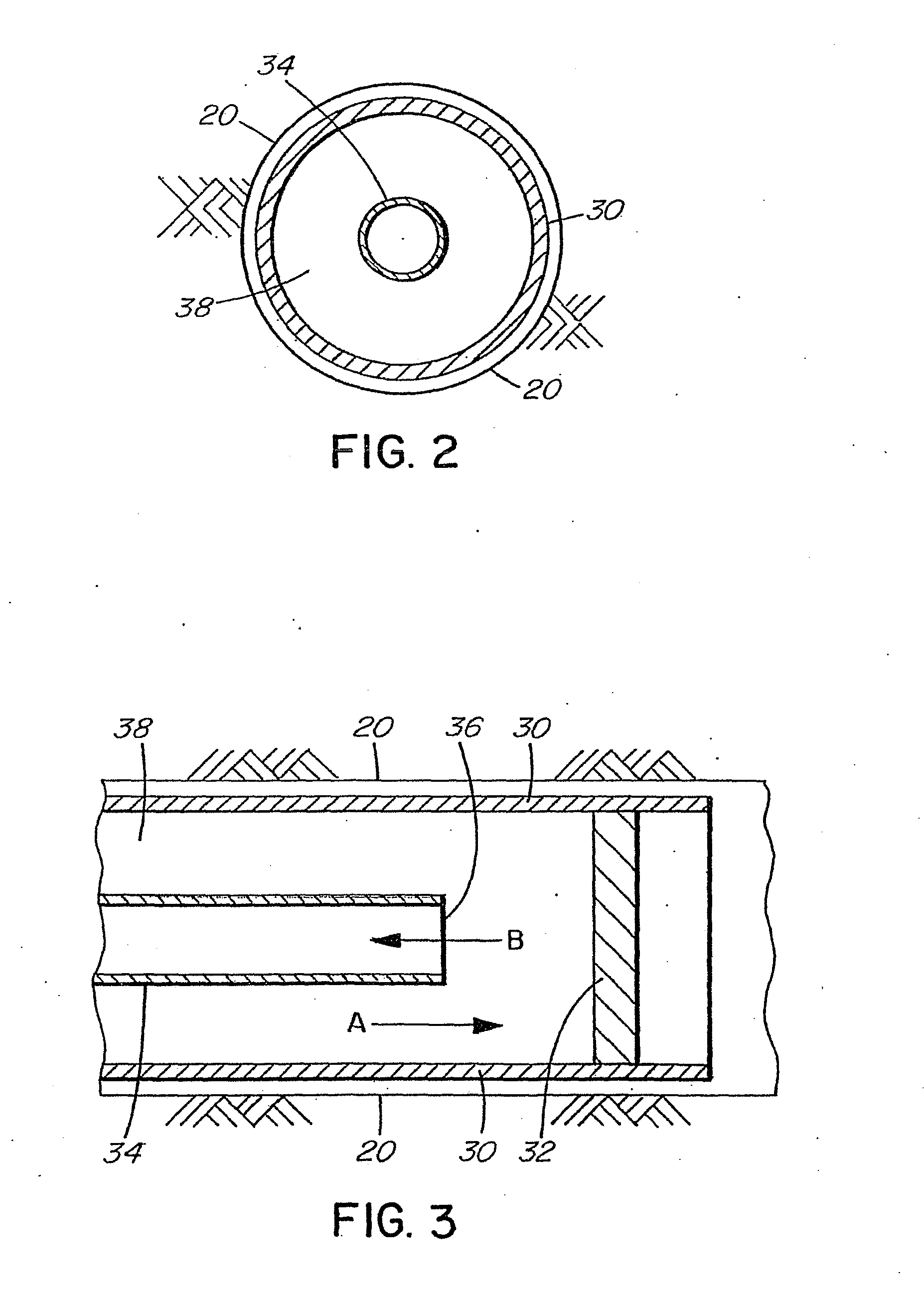Heat energy extraction system from underground in situ combustion of hydrocarbon reservoirs
a hydrocarbon reservoir and energy extraction technology, which is applied in the direction of heat storage fuel, dynamo-electric machines, other heat production devices, etc., can solve the problems of large environmental damage, high cost and sometimes ineffective processes, and serious environmental problems, and achieve the effect of improving the functioning and efficiency of the related circui
- Summary
- Abstract
- Description
- Claims
- Application Information
AI Technical Summary
Benefits of technology
Problems solved by technology
Method used
Image
Examples
Embodiment Construction
[0016]The unique contribution of the invention is that it provides a universally adaptable means to connect any subterranean heat with any surface use that requires significant heat energy, including electric power generation, and industrial / commercial processes and heating applications. The system is easily adjusted for scale by increasing the number of circuits. In all applications the heat delivered is free of greenhouse gases and other contaminants. Carbon dioxide and other contaminants from the underground burning remain trapped in the underground heat source subterranean reservoir and are thus permanently sequestered. The invention uses no water (other than possibly to fill the pipes initially if water is to be the working fluid), uses no fracturing, can go miles deep in any direction, is environmentally clean, and in relative terms, is cheap.
[0017]The basic module of the invention, a “circuit,” is an assembly of pipes inside a directionally drilled bore hole that extends from...
PUM
 Login to View More
Login to View More Abstract
Description
Claims
Application Information
 Login to View More
Login to View More - R&D
- Intellectual Property
- Life Sciences
- Materials
- Tech Scout
- Unparalleled Data Quality
- Higher Quality Content
- 60% Fewer Hallucinations
Browse by: Latest US Patents, China's latest patents, Technical Efficacy Thesaurus, Application Domain, Technology Topic, Popular Technical Reports.
© 2025 PatSnap. All rights reserved.Legal|Privacy policy|Modern Slavery Act Transparency Statement|Sitemap|About US| Contact US: help@patsnap.com



